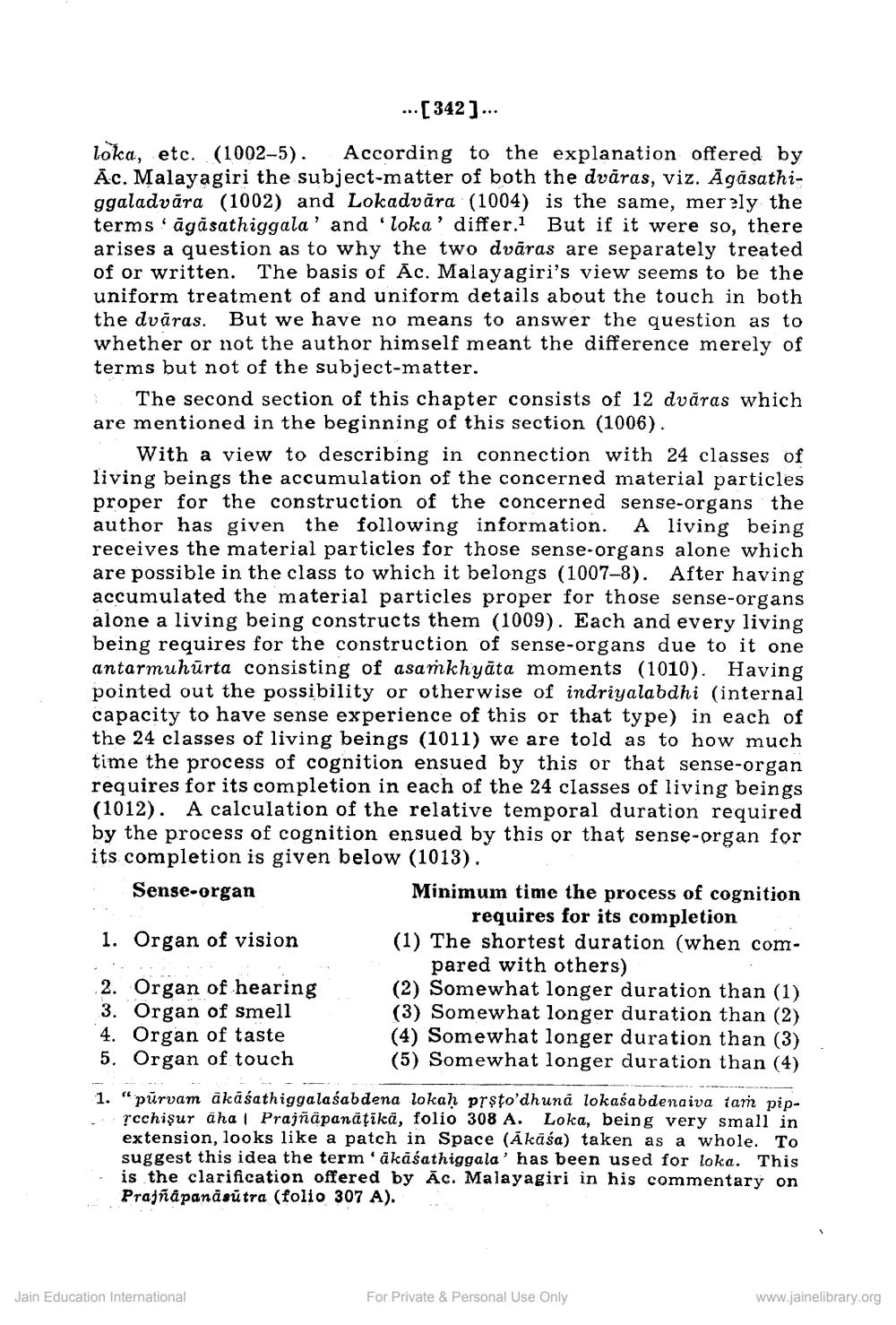________________
... [342]...
loka, etc. (1002-5). According to the explanation offered by Āc. Malayagiri the subject-matter of both the dvaras, viz. Āgăsathiggaladvāra (1002) and Lokadvāra (1004) is the same, merely the termsāgåsathiggala' and 'loka' differ. But if it were so, there arises a question as to why the two dvāras are separately treated of or written. The basis of Ac. Malayagiri's view seems to be the uniform treatment of and uniform details about the touch in both the dvaras. But we have no means to answer the question as to whether or not the author himself meant the difference merely of terms but not of the subject-matter. ; The second section of this chapter consists of 12 dvāras which are mentioned in the beginning of this section (1006).
With a view to describing in connection with 24 classes of living beings the accumulation of the concerned material particles proper for the construction of the concerned sense-organs the author has given the following information. A living being receives the material particles for those sense-organs alone which are possible in the class to which it belongs (1007-8). After having accumulated the material particles proper for those sense-organs alone a living being constructs them (1009). Each and every living being requires for the construction of sense-organs due to it one antarmuhurta consisting of asaṁkhyāta moments (1010). Having pointed out the possibility or otherwise of indriyalabdhi (internal capacity to have sense experience of this or that type) in each of the 24 classes of living beings (1011) we are told as to how much time the process of cognition ensued by this or that sense-organ requires for its completion in each of the 24 classes of living beings (1012). A calculation of the relative temporal duration required by the process of cognition ensued by this or that sense-organ for its completion is given below (1013). Sense-organ
Minimum time the process of cognition
requires for its completion 1. Organ of vision (1) The shortest duration (when com
pared with others) 2. Organ of hearing
Somewhat longer duration than (1) 3. Organ of smell
(3) Somewhat longer duration than (2) 4. Organ of taste
(4) Somewhat longer duration than (3) 5. Organ of touch
(5) Somewhat longer duration than (4)
1. "pūrvam ākāśathiggalaśabdena lokaḥ prsto'dhuna lokaśabdenaiva tam pip. rochişur áha 1 Prajñāpanātikā, folio 308 A. Loka, being very small in
extension, looks like a patch in Space (Akāśa) taken as a whole. To suggest this idea the term 'äkāśathiggala' has been used for loka. This is the clarification offered by Āc. Malayagiri in his commentary on Pramāpalsutra (folio 307 A).
Jain Education International
For Private & Personal Use Only
www.jainelibrary.org




